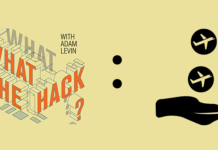

In theory, nobody wants to be in debt. But when credit card bills arrive, we don’t exactly rush to pay them. And when we do, we may not pay the full balance.
Understandably, we don’t want to be separated from our money. We earned that money, it’s hard to see it come into your bank account and exit just as quickly. But racking up high balances on your credit cards, even if you continue to make on-time payments, and not paying the balances in full can get you into some credit trouble. Not only will you be in debt, but your credit scores will suffer — why?
After payment history, the portion of your credit limit that you use has the biggest influence on your credit score. Credit utilization, as it is called, is calculated both for individual cards and all your cards — and the lower it is, the better. (You can see where your credit utilization stands for free by getting your credit report summary every month on Credit.com.) Credit experts suggest not going over 30% of your limit, and if you are trying to achieve the very best scores, under 10%. If your credit limits are relatively low, that can seem impossible (and unfair if you are paying your bill every month), but most credit scoring models consider high credit utilization to be a red flag that you could easily get overextended and miss a future payment.
Getting Out of Debt & Raising Your Credit Scores
If you’ve gotten yourself into credit card debt this way — you’re making your payments, you’re not late and yeah, you have debt, but you’ll pay it off eventually — you may see your scores go down. Carrying a balance on your credit cards from month to month not only costs you money in interest charges, the increased utilization can hurt your credit. But here’s the upside — you can fix it. There are a few of ways to do so.
1. Raise Your Limits
The first is to ask your issuer to increase your credit limit (but be aware that you’ll need to have a reason, such as perhaps more income). If you have a secured credit card, you can increase your limit by increasing your security deposit. Keep in mind that your credit is already being hurt by a high utilization rate, so creditors may see you as more at-risk of defaulting than when they first approved you for that credit card and may not want to increase your limit.
2. Pay Down Your Debt
The second option is the most obvious one — start paying off your credit card debt! You can use a credit card payoff calculator like this one to make a plan and start tackling your debt. Paying off credit card debt can be a long process depending on how much debt you have and how much flexibility exists in your current budget. The lower you can get your credit utilization, the better your credit scores will be. Just keep in mind that skipping other bills to pay credit card debt is rarely advisable. A missed payment is a bigger black mark on your credit report than a high utilization.
3. Get a Balance Transfer Credit Card
Sounds a bit counterintuitive, right? Why would you apply for a new credit card when you’re having trouble paying off your credit card debt? Balance transfer credit cards are designed to help you manage your debt and it can make a big impact on your utilization problem right off the bat. First off, the balance transfer gives you some breathing room by allowing you to transfer some of your debt to a credit card with 0% interest for a set period of time. You may have to pay a balance transfer fee (often 3% of the transferred balance), so pay attention to the terms of the card before you apply. Then you have some time to avoid accruing interest charges on that balance while you pay off the debt.
The added bonus for your credit score is that your overall credit utilization will be helped by the extra credit card and increased credit limit. Let’s say, for example, you have three credit cards with limits of $3,000 each. You have balances on those cards of $2,000 each. That totals to $6,000 of debt with an overall credit limit of $9,000, a credit utilization of 67%. If you open a new balance transfer card with a limit of $6,000, you can improve your utilization to 40% ($6,000 total debt / $15,000 total limit = 40% utilization). And as you use the balance transfer card to pay off your debt with (albeit temporary) low-to-no interest, you can get under that 30% mark much faster.
The good news about credit utilization is that once you are able to get that number down, you are not penalized for a having had high credit utilization in the past. Using cards lightly and keeping balances low just before you are going to apply for credit can help you make sure your credit score is as high as it can be before a lender or card issuer checks it.
This article originally appeared on Credit.com and was written by Bev O’Shea.









